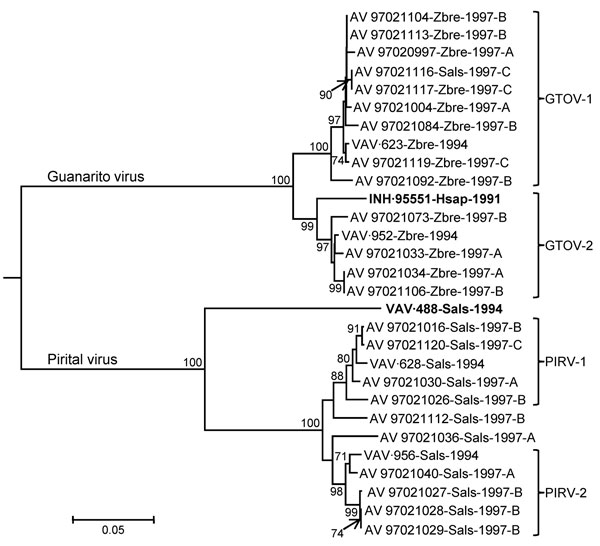Volume 17, Number 12—December 2011
Research
Transmission of Guanarito and Pirital Viruses among Wild Rodents, Venezuela
Figure

Figure. Phylogenetic relationships among 27 arenaviruses isolated from rodents captured on Hato Maporal, Portuguesa State, Venezuela, 1994 or 1997; Guanarito virus (GTOV) prototype strain INH-95551 (boldface); and Pirital virus (PIRV) prototype strain VAV-488 (boldface) based on a neighbor-joining analysis of nucleocapsid protein gene sequence data. Branch lengths are proportional to genetic (p) distances; the numbers at the nodes indicate the percentage of 1,000 bootstrap replicates that supported the interior branches; bootstrap support values <70% are not listed; and the analysis was rooted to Oliveros virus strain 3229–1 (GenBank accession no. NC_010248). The branch labels include (in the following order) virus strain, host species, year of isolation, and (viruses from 1997) the study site at which the infected rodent was captured. Hsap, Homo sapiens; Sals, Sigmodon alstoni; Zbre, Zygodontomys brevicauda.